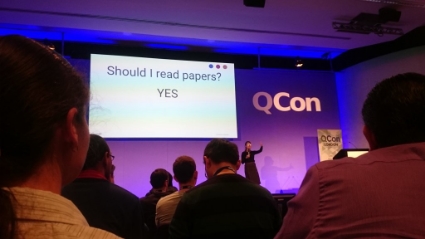Worth Reading: Data is a toxic asset

The post Worth Reading: Data is a toxic asset appeared first on 'net work.

The post Worth Reading: Data is a toxic asset appeared first on 'net work.

How does a network designer, well, actually design something? What process do you use as a designer to get from initial contact with a problem to building a new design to deploying a solution? What is the design mindset? I’ve been asking myself just this question these last few months, going through old documentation to see if I can find a pattern in my own thinking that I could outline in a way that’s more definite than just “follow my example.” What I discovered is my old friends the OODA loop and the complexity model are often in operation.
So, forthwith, a way to grab hold of a designer mindset, played out in an unknown number of posts.
Begin with observe. Observation is the step we often skip, because we’ve either worked on the network for so long “we don’t need to,” or we’re “so experienced we know what to look for.” This is dangerous. Let me give you an example.
 A long time ago, in a small shire on the borders of reality (it seems now), I worked on a piece of equipment we called the funnyman. Specifically, this was the FNM-1, which was used to detect runway Continue reading
A long time ago, in a small shire on the borders of reality (it seems now), I worked on a piece of equipment we called the funnyman. Specifically, this was the FNM-1, which was used to detect runway Continue reading

Last fall, the Interior Minister of Ukraine announced the creation of a national Cyberpolice (Кіберполіцію) to protect the country from everything from credit card fraud to malware. Here’s something that would be great to add to their list: fraudulent BGP routing out of Ukraine. Last year, we reported on an incident in which Ukrainian ISP Vega hijacked routes from British Telecom (including that of the UK’s Atomic Weapons Establishment), an event that could perhaps be chalked up to an innocent mistake. However, the fraudulent routing we’re now seeing from Ukraine is deliberately designed to go unnoticed. We’ll review some of this new behavior in this blog.
Governments take note
| The profile of this issue has grown in the past year as governments have had to respond to their address space being fraudulently used. Last July, the Dutch Minister of Foreign Affairs (pictured right) was confronted with parliamentary questions concerning an incident where “attackers” had commandeered IP address space belonging to the Ministry of Foreign Affairs the previous year. In that incident, on 18 November 2014, Decision Marketing (AS62228) out of Sofia, Bulgaria began globally announcing eleven BGP routes that did not belong to Continue reading |
The Network Break speculates whether Cisco's Spark will catch fire and analyzes the latest update in Cisco's patent spat with Arista. We delve into Microsoft's Linux hug and its new open cloud OS, and get real about Google's reasons for joining Open Compute.
The post Network Break 78: Cisco Lights Spark; Microsoft Hugs Linux appeared first on Packet Pushers.
The Network Break speculates whether Cisco's Spark will catch fire and analyzes the latest update in Cisco's patent spat with Arista. We delve into Microsoft's Linux hug and its new open cloud OS, and get real about Google's reasons for joining Open Compute.
The post Network Break 78: Cisco Lights Spark; Microsoft Hugs Linux appeared first on Packet Pushers.

"CS research is timeless." Lessons learned are always pertinent. @aysylu22 #qconlondon
— Paula Walter (@paulacwalter) March 8, 2016
There has been a renaissance in the appreciation of computer science papers as a relevant source of wisdom for building today's complex systems. If you're having a problem there's likely some obscure paper written by a researcher twenty years ago that just might help. Which isn't to say there aren't problems with papers, but there's no doubt much of the technology we take for granted today had its start in a research paper. If you want to push the edge it helps to learn from primary research that has helped define the edge.
If you would like to share your love of papers, be proud, you are not alone:

The post Worth Listening: Aligning IT and the Business appeared first on 'net work.
 Will open source solutions ever be as robust as commercial solutions? Huawei's Ayush Sharma elaborates in this featured interview with SDxCentral.
Will open source solutions ever be as robust as commercial solutions? Huawei's Ayush Sharma elaborates in this featured interview with SDxCentral.
Interop offers top-notch education, fun events, and great contacts. Plus, you can win a free pass.
Automation can reduce the time spent on tedious network tasks. Here’s how to get started.